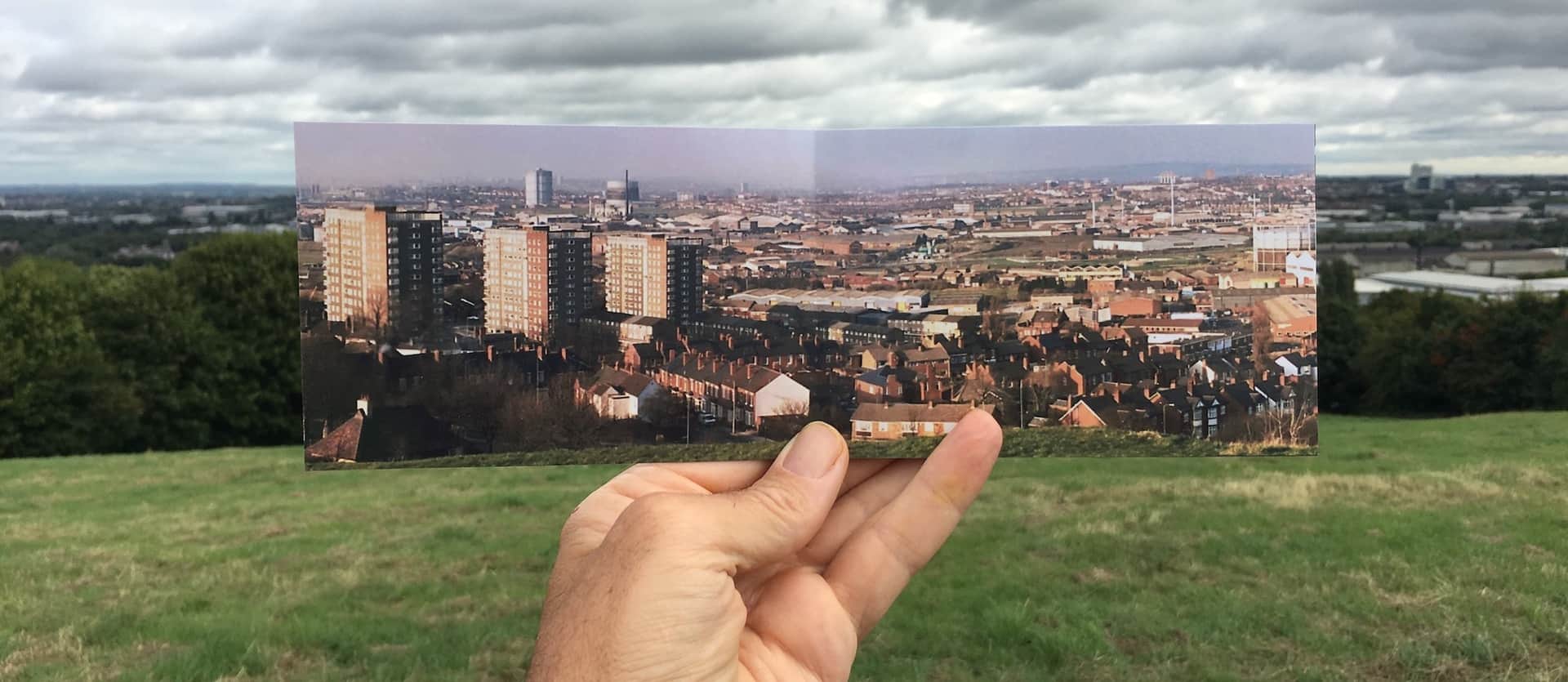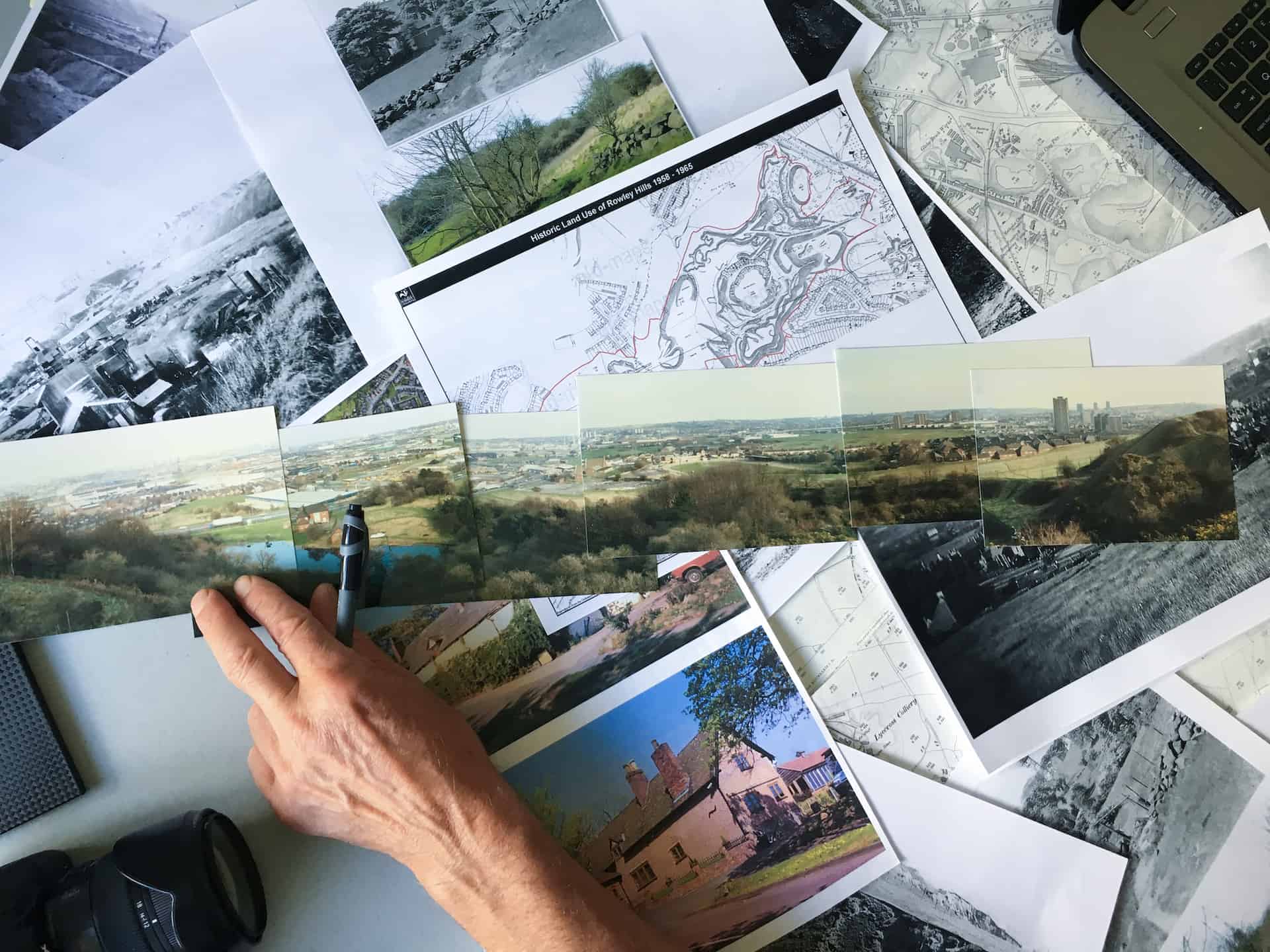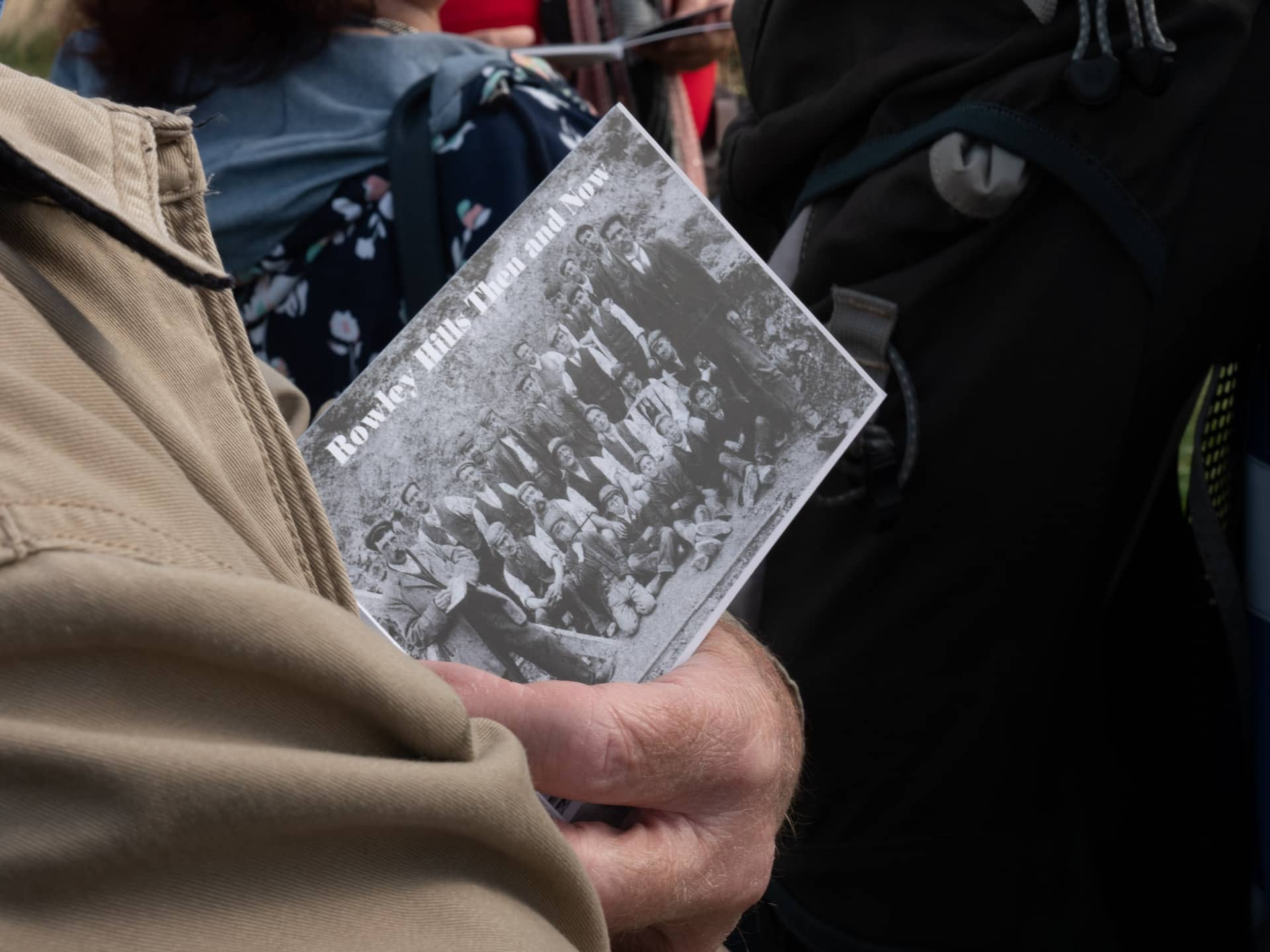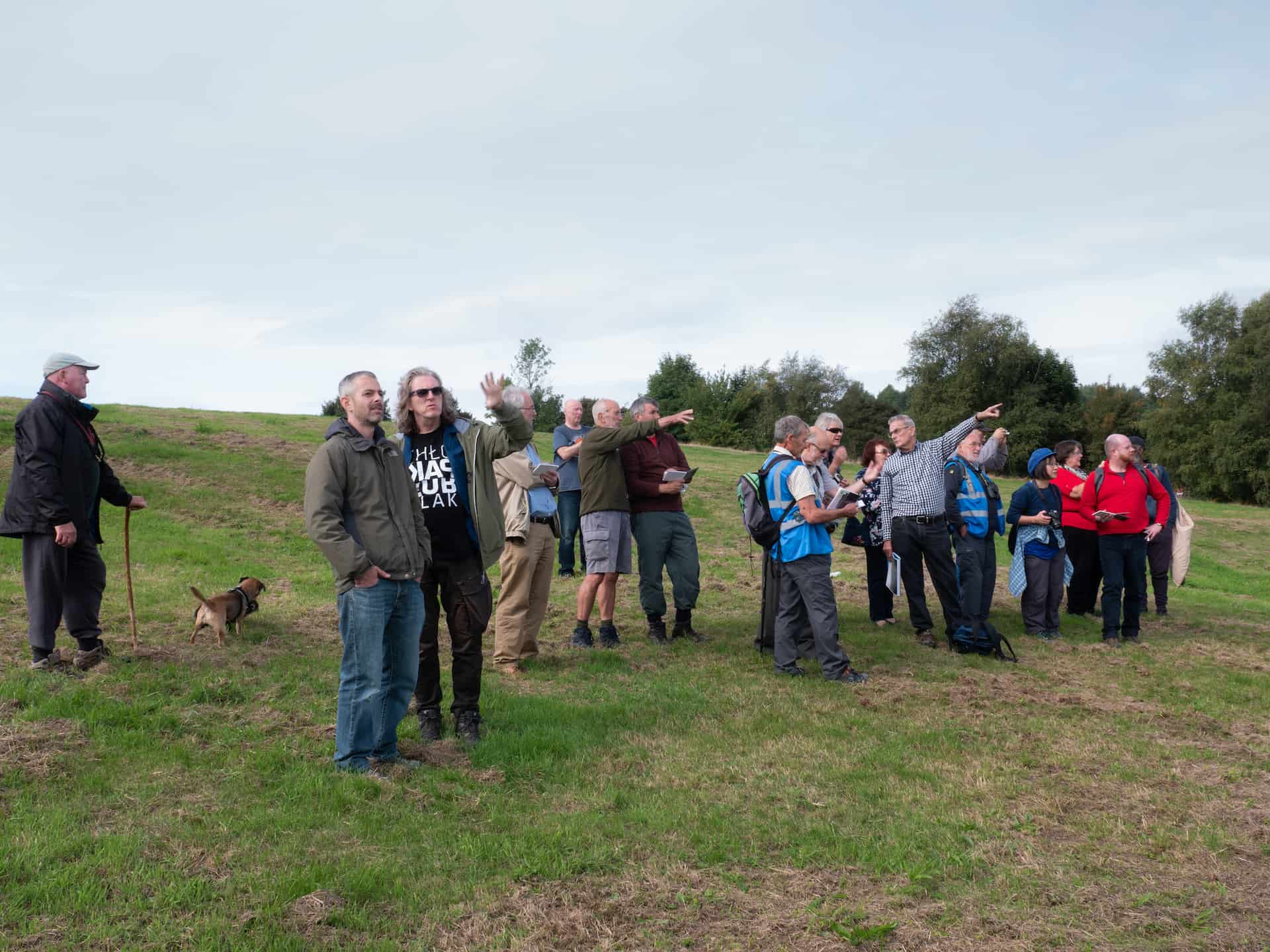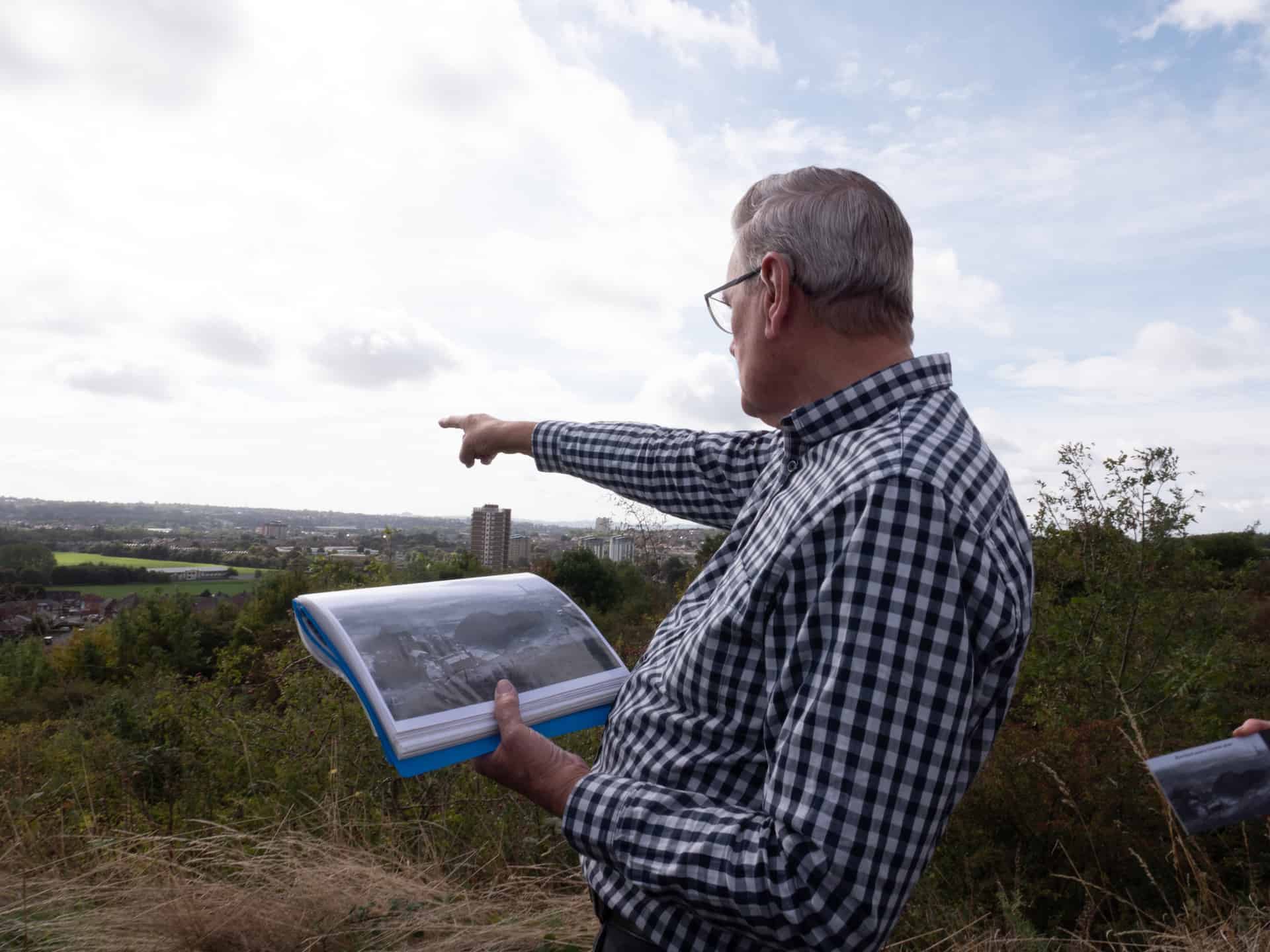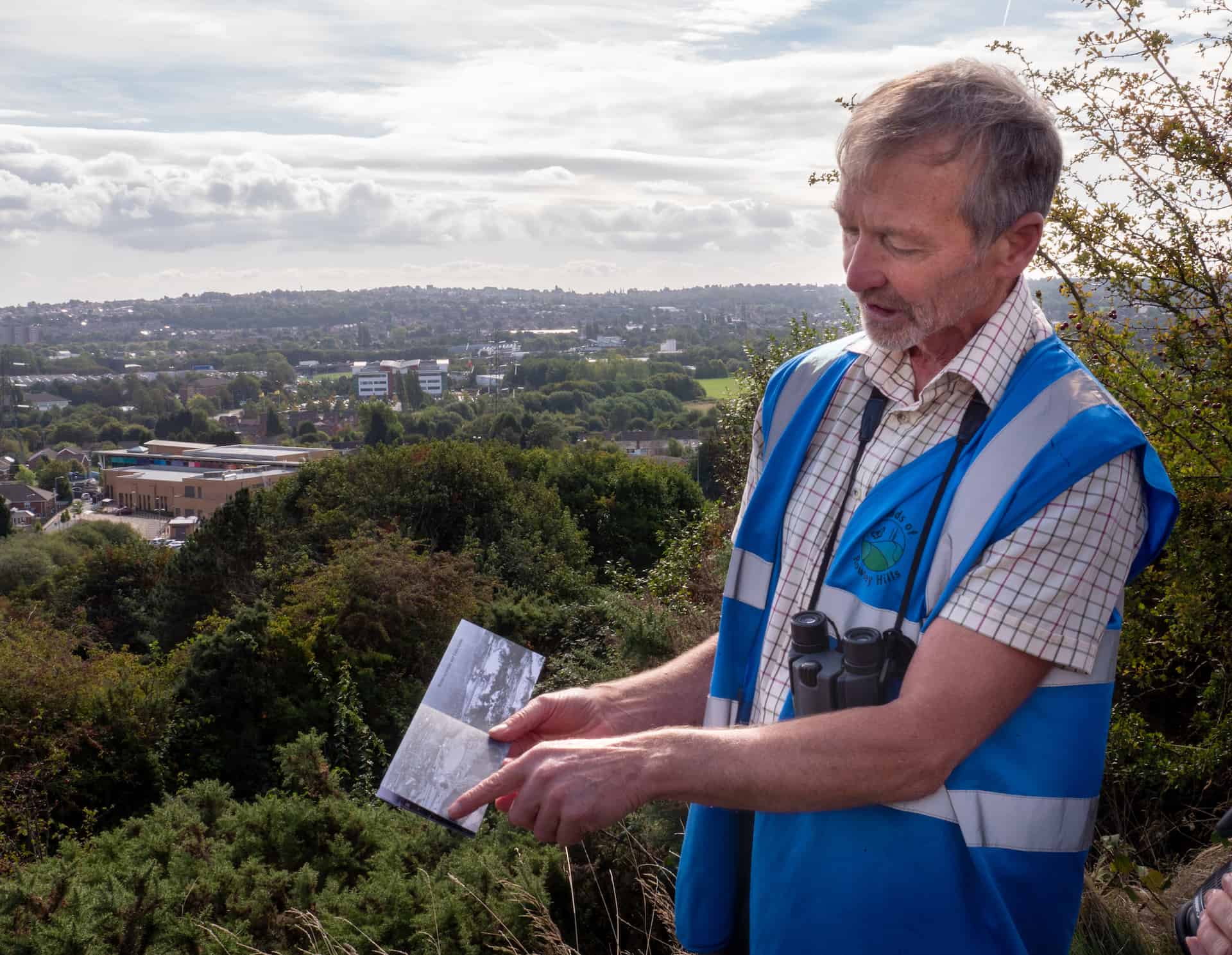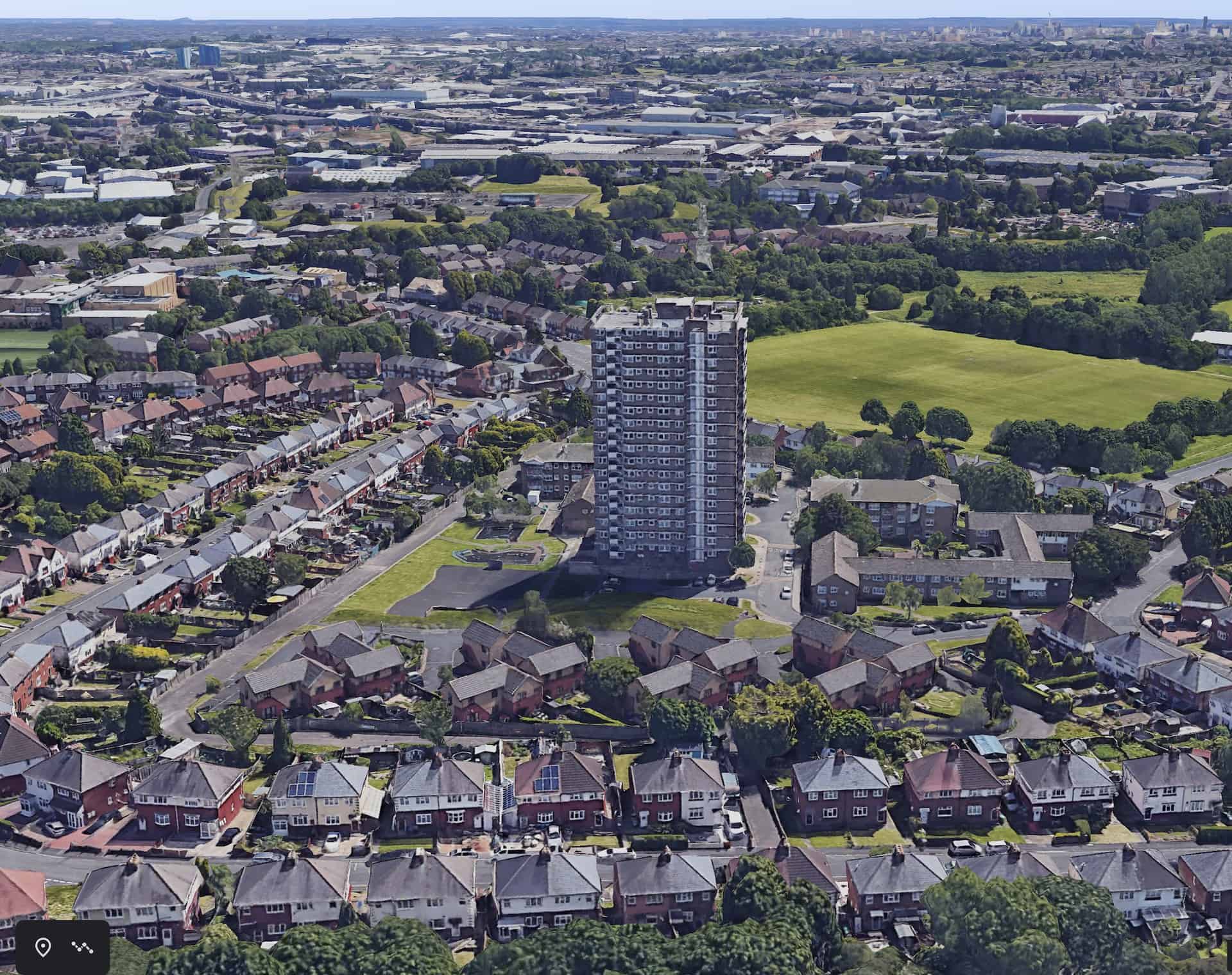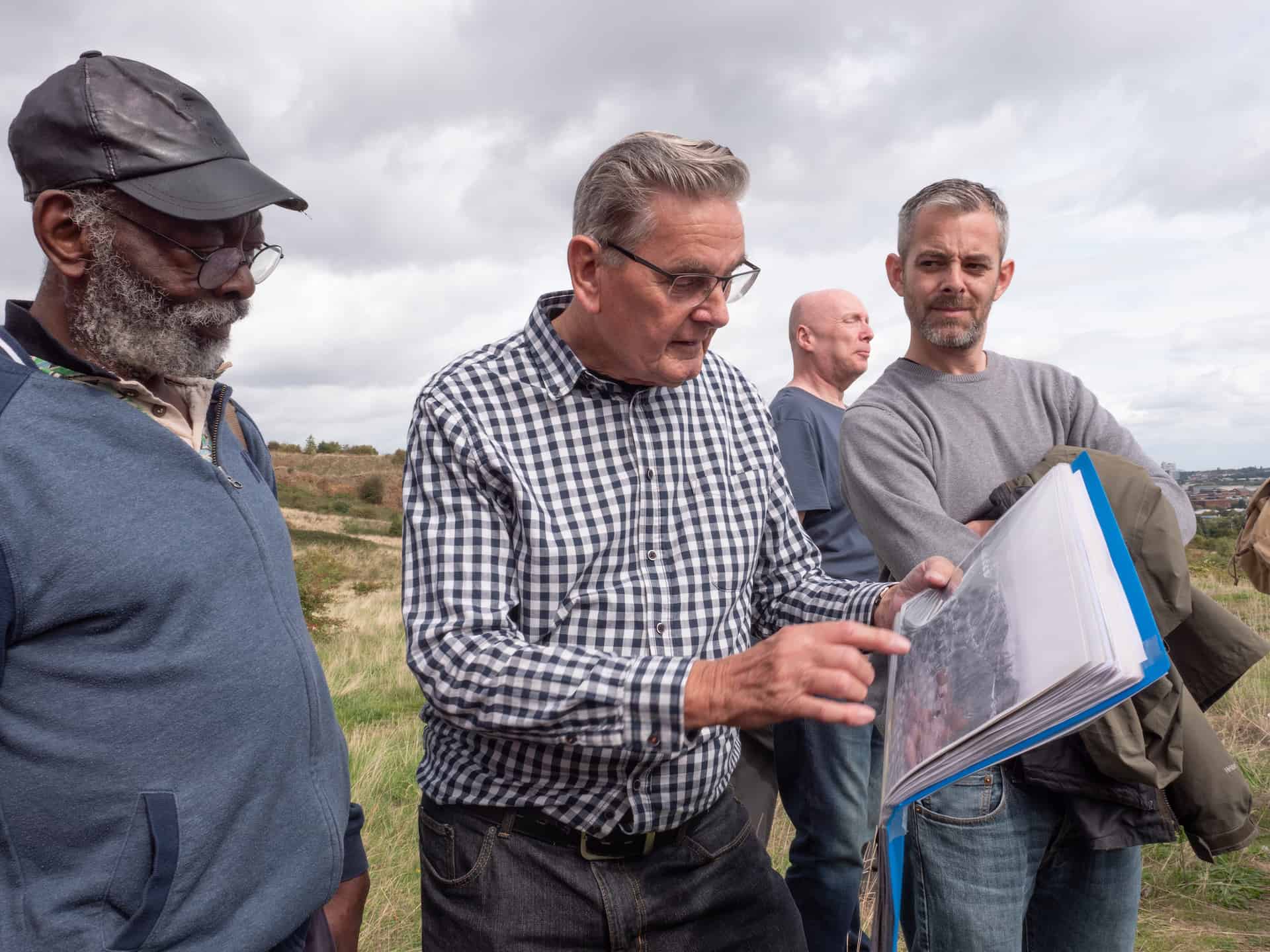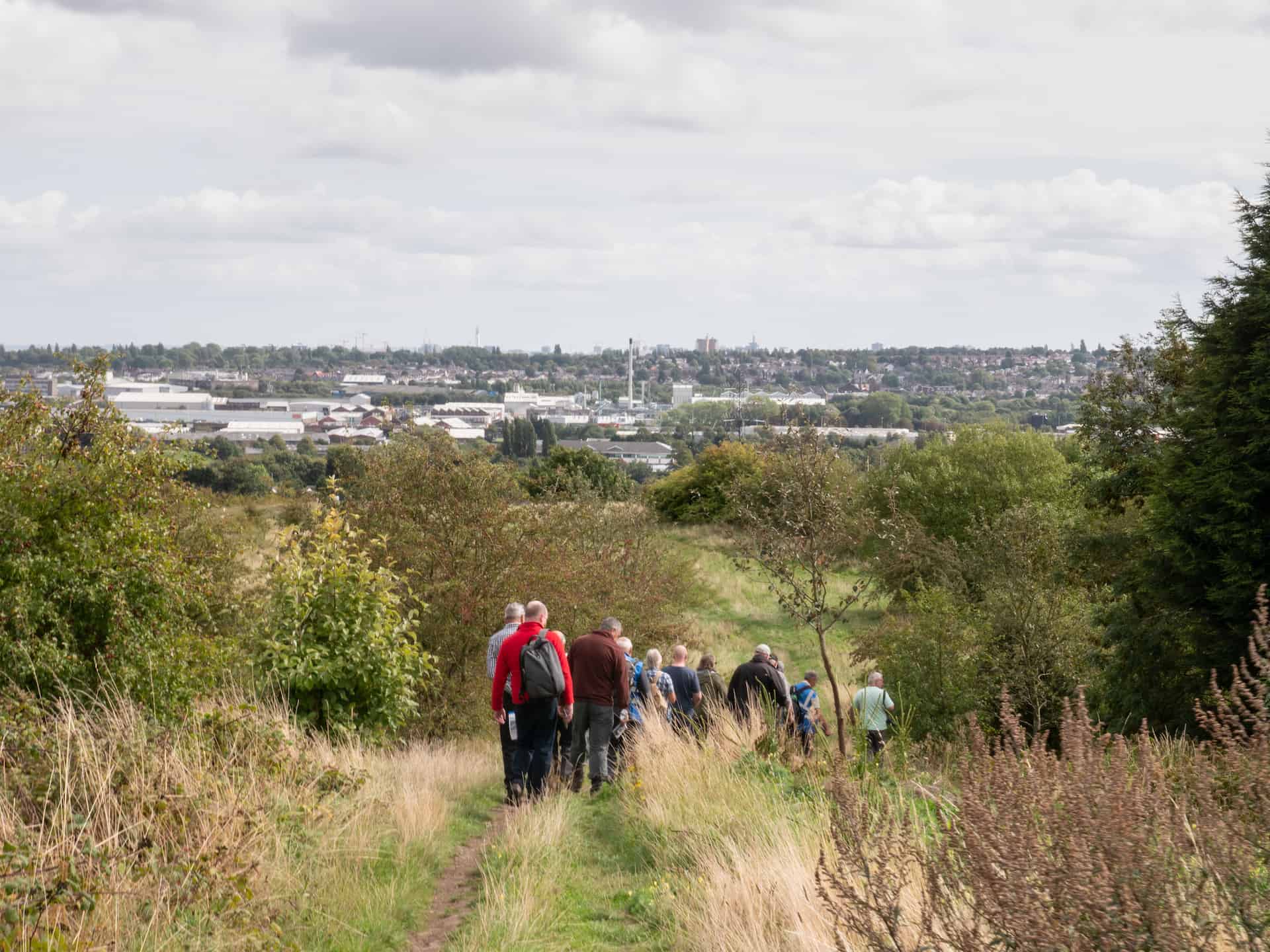Looking Back Guided Walks and Photography Archives
A black region where not a blade of grass was seen to grow, where not a bud put forth its promise in the spring, where nothing green could live but on the surfaces of a stagnant pool.
Charles Dickens in The Old Curiosity Shop
One of the ways we can use archival photographs is to take them back into the urban landscape, to see what has changed. We created Looking Back – Then and Now, a guided walk over the Rowley Hills with photographs from the Jim Rippin archive. The project was led by Jim Rippin who worked closely with fellow enthusiast Mike Poulton. Together they chose 15 archival images taken from the hills over the last 70 years, which form the basis for the route. Both men have an intimate knowledge of the area and a keen awareness of its history reaching back through the Industrial Revolution to prehistoric times.
The Rowley Hills are made of four promontories, Turner’s Hill, Bury Hill, Portway Hill and Darby’s Hill. Part of the area is now designated as a Site of Local Importance for Nature Conservation, as well as being of geological significance. The views on the walk are far-reaching; Turner’s Hill offers a tremendous panorama, the highest point in the West Midlands at 883 feet above sea level. The ridge divides the Black Country into two parts, separating the catchment areas for the River Severn and the River Trent. From here you can see the Albion football ground, the BT Tower standing in the centre of Birmingham seven miles away, and the edge of Cannock Chase, some 22 miles away.
The hills themselves have long been a place of intense quarrying, as well as mining. In 1875, there were 26 collieries in Rowley alone. The names found on older maps tell of their presence, including Ramrod Colliery, Samson Colliery, Lifter Pit, Bottom Pressure Pit, Top Pressure Pit, Dingle Pit and Topend Pit.
To some, the Black Country’s industrial scene was a ravaged landscape. Thomas Carlyle wrote in 1824:
A frightful scene... a dense cloud of pestilential smoke hangs over it forever... and at night the whole region burns like a volcano spitting fire from a thousand tubes of brick. But oh the wretched thousands of mortals who grind out their destiny there!
This part of the world now looks remarkably different. Thanks to Mike Poulton and the voluntary group the Friends of Rowley Hills, part of the hills are designated as a protected nature reserve. Mike has dedicated many years to helping document, preserve and celebrate the flora and fauna of this landscape. The walk shows how the disfigured, post-industrial landscape can be transformed into a thriving habitat for numerous species of butterflies, and insects, wildflowers. Samson Quarry (page 325) was worked until the turn of the 20th century, is now no longer visible, filled in with waste material and the land returned to nature.
An important element of the walk is to invite participants to share their own stories and memories of the local area, reflecting on what life was like and what has changed. When we look at the surrounding landscape alongside archive photographs, we can see how much has changed in living memory. A good example is Jim’s black and white 1950s photograph (facing page) looking out to Wallace Road and beyond. When we compare it with a shot from Google Earth today we can see the transformation. Gone are the large-scale industrial producers including Accles & Pollock, Chance and Hunt Chemical Works that are now replaced by an array of distribution warehouses, small-scale manufacturing units, and office buildings. The spoil heap in the foreground is now the site of a tower block and new houses, and Pratts Brickyard, with its iconic chimney visible in the centre of the photo, has been replaced by playing fields.
This two-hour guided walk shows how photography collections combined with local knowledge can give us a rich insight into how our urban landscapes are continually being reshaped as our own society changes.
